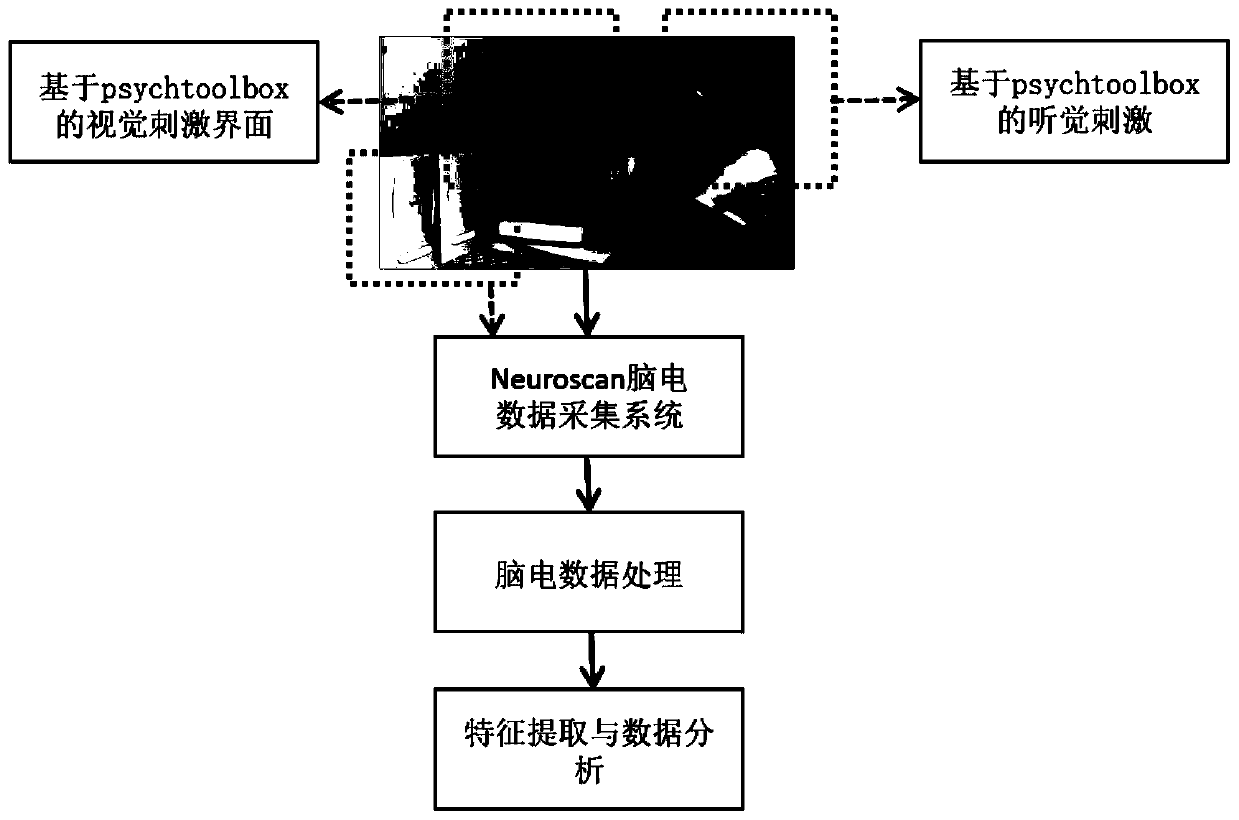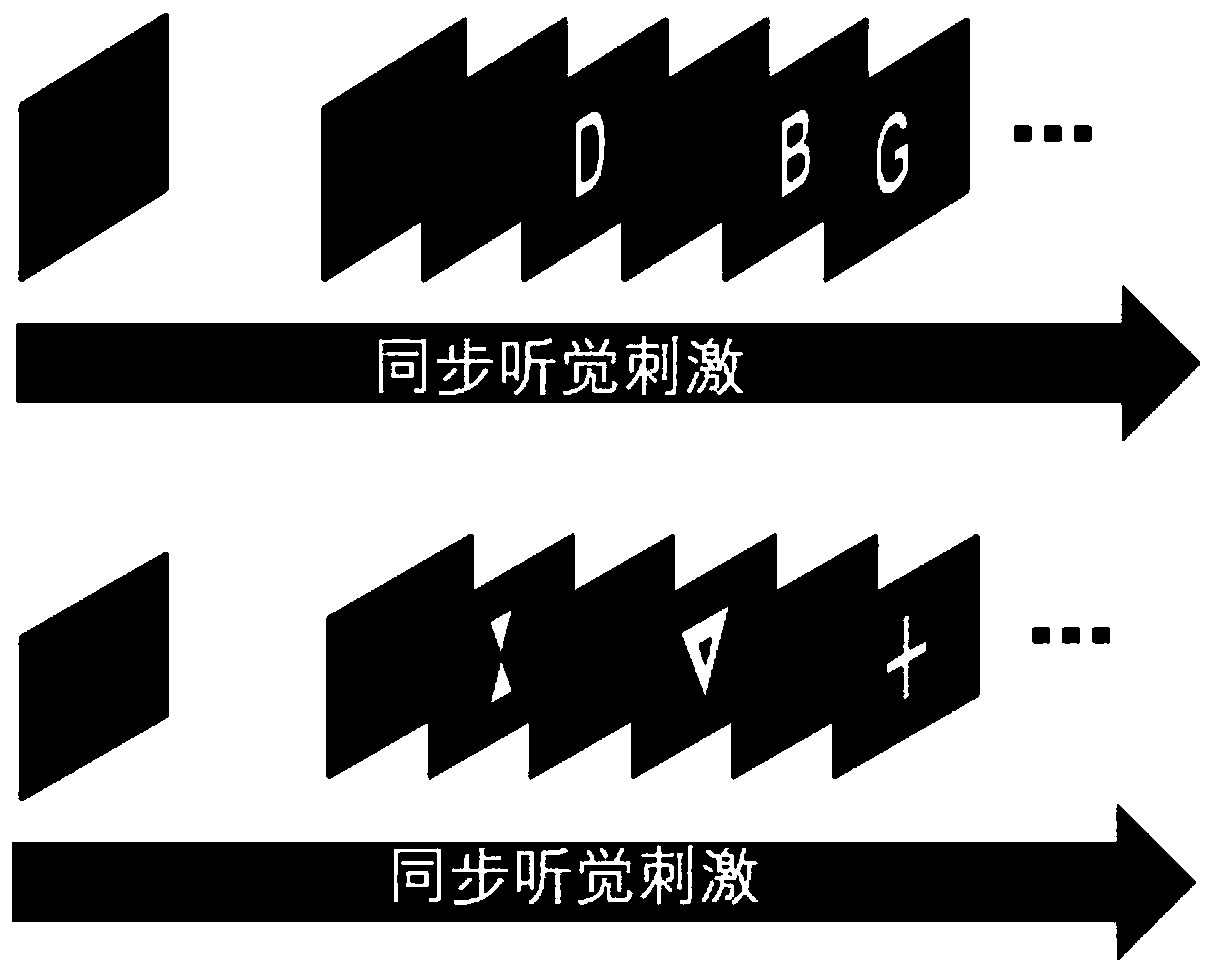P300-based audio-visual dual-channel competition mechanism brain-computer interface method
A dual-channel, machine-interface technology, applied in the field of brain-computer interface, can solve the problems of insufficient BCI in audio-visual competition, and achieve the effect of perfect design
- Summary
- Abstract
- Description
- Claims
- Application Information
AI Technical Summary
Problems solved by technology
Method used
Image
Examples
Embodiment 1
[0031] The embodiment of the present invention designs a brain-computer interface (BCI) paradigm under the condition of visual and auditory competition based on the P300 signal in ERP. P300 was first discovered by Sotton in 1965. It is a kind of event-related potential (Event-Related Potential, ERP) in EEG. It is called P300 because it is a positive potential that appears on the head 300ms after the evoked stimulus. Reflects changes in the cognitive state of a person. If a different visual or auditory stimulus is added to the sequence of repetitive stimuli, this stimulus is called a deviant stimulus, and the brain is elicited to respond. This application scheme combines sight and hearing, the main sensory channels of human beings, repeats the stimulus according to the oddball paradigm, and designs the stimulation paradigm to induce visual and auditory evoked potentials. Through analysis and comparison, it explores the competitive relationship between visual and auditory human ...
Embodiment 2
[0034] figure 1 It is a schematic diagram of the experimental process of the present invention. The design includes EEG electrode site selection, reference electrode placement, visual and auditory stimulation output system based on Psychtoolbox of MATLAB and Neuroscan EEG acquisition system. The subjects sat in front of the display screen presenting visual stimuli, watched the letters / pictures on the computer screen change, and at the same time output audio stimuli with headphones. Count the number of visual or auditory deviation stimuli silently. When the counting deviation is stimulated, the cognitive process of the brain will be reflected in the electrical signal of the cerebral cortex, so that an event-related potential will appear. Use the Neuroscan EEG acquisition system to collect experimental EEG, and then perform data preprocessing, feature extraction and analysis, compare the differences in event-related potentials under the experimental parameters and the differen...
PUM
 Login to View More
Login to View More Abstract
Description
Claims
Application Information
 Login to View More
Login to View More - R&D
- Intellectual Property
- Life Sciences
- Materials
- Tech Scout
- Unparalleled Data Quality
- Higher Quality Content
- 60% Fewer Hallucinations
Browse by: Latest US Patents, China's latest patents, Technical Efficacy Thesaurus, Application Domain, Technology Topic, Popular Technical Reports.
© 2025 PatSnap. All rights reserved.Legal|Privacy policy|Modern Slavery Act Transparency Statement|Sitemap|About US| Contact US: help@patsnap.com



